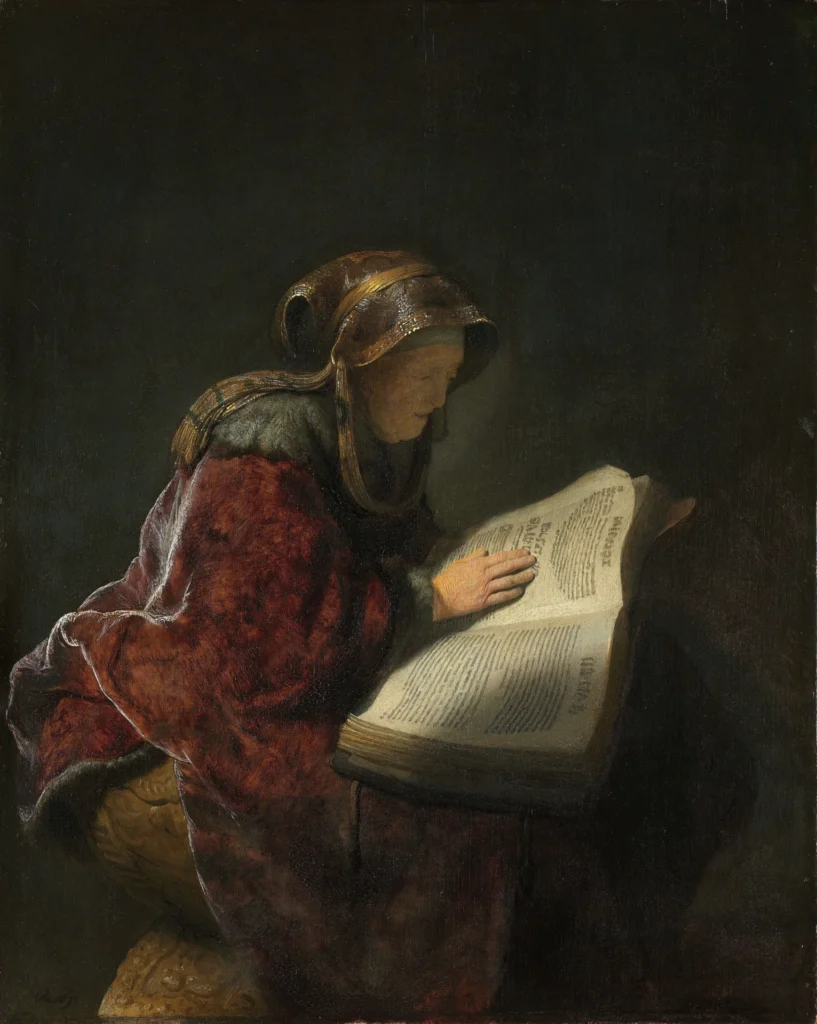An Old Woman Reading
Rembrandt van Rijn's 'An Old Woman Reading' (1655) captures the serene focus of its subject, revealing the artist's masterful grasp of chiaroscuro that allows a profound depth to the elderly woman's environment. In contrast, 'An Old Woman Called 'The Artist's Mother' (1627-1629) presents a touching yet somber portrayal, believed to be the artist's mother, exhibiting detailed textures and vivid light. Together, these works illustrate Rembrandt's sensitivity and skill in portraying humanity.
1627 - 1655
About the Artwork
Both artworks encapsulate different narratives yet reflect Rembrandt's deep empathetic engagement with elderly subjects. 'An Old Woman Reading' portrays a moment of solitude and reflection, likely resonant of wisdom gained through experience, while 'An Old Woman Called 'The Artist's Mother' dives into the personal realm of familial love, hinting at the artist's emotional connections. The rich lighting techniques and the detailed representation of textures speak to Rembrandt's innovative approaches to oil painting during the Dutch Golden Age, making each piece a study in both artistic mastery and emotional depth.
Did You Know
Rembrandt is renowned for his masterful use of chiaroscuro, a technique that plays on the contrast between light and dark to achieve a three-dimensionality and emotional resonance in his work. Both ‘An Old Woman Reading’ and ‘The Artist’s Mother’ exemplify this artistic approach, enhancing the richness of their subjects.
‘The Artist’s Mother’ is considered a tronie, which typically depicts expressive figures or faces, emphasizing character over likeness. These types of artworks were often created by young artists to demonstrate their skill and creativity, establishing a foundation for their future reputations.
While ‘The Artist’s Mother’ likely depicts Rembrandt’s own mother, ‘An Old Woman Reading’ serves as a broader observation of elderly women, suggesting a depth of character that transcends individual identities, displaying Rembrandt’s ability to capture the universal human experience across generations.










